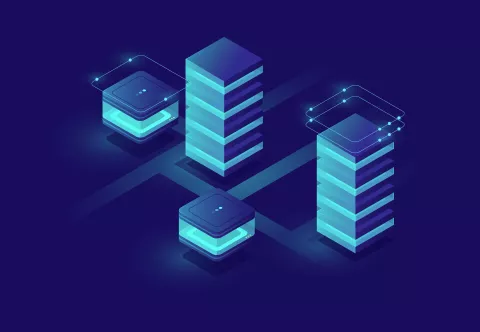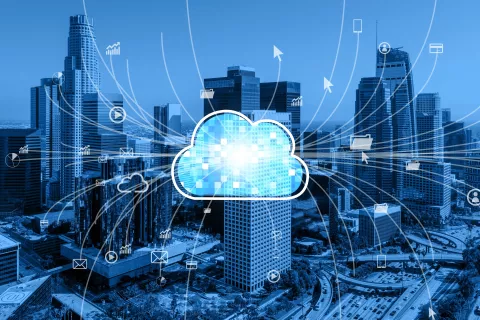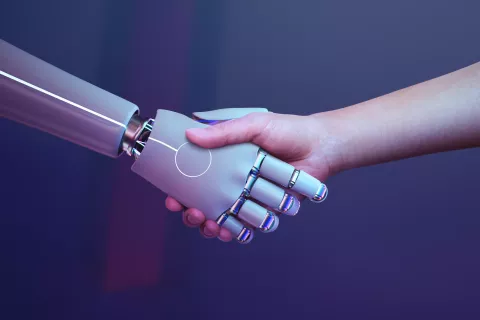The SaaS (Software-as-a-Service) landscape has evolved from a niche delivery model into the backbone of global business operations. As digital transformation accelerates across industries, the next five years will redefine how software is built, delivered, and experienced. From AI-driven intelligence to new pricing models and sustainable innovation, the future of SaaS will be faster, smarter, and more human than ever before. Here are the key trends that will shape the next era of SaaS.

1. AI-Powered Everything
Artificial intelligence is moving from a feature to a foundational layer in SaaS. In the coming years, AI will power every aspect of the user experience — from automation and analytics to decision-making and personalization.
Expect to see:
- Predictive insights that anticipate user needs before they act.
- Generative AI tools that create reports, strategies, or designs automatically.
- Intelligent assistants built directly into SaaS platforms to guide users.
AI won’t replace human judgment — it will enhance it, transforming SaaS into a true partner for users rather than just a tool.
2. Hyper-Personalization at Scale
Generic user experiences are disappearing. The SaaS platforms of the future will dynamically adapt to each user’s preferences, goals, and behavior.
How it will look:
- Adaptive dashboards that display the most relevant data for each role.
- Custom workflows based on usage patterns and past performance.
- Personalized recommendations powered by behavioral analytics.
In 2025 and beyond, personalization will no longer be a differentiator — it will be a baseline expectation.
3. Vertical SaaS on the Rise
The market is shifting from broad, one-size-fits-all tools to specialized platforms built for specific industries — healthcare, fintech, education, real estate, energy, and beyond.
Vertical SaaS solutions offer deeper expertise, tailored workflows, and built-in compliance, which horizontal tools can’t match. As industries become more regulated and data-driven, this specialization will give rise to new category leaders.
4. No-Code and Low-Code Democratization
SaaS platforms are becoming more inclusive. The next generation of no-code and low-code tools will empower non-technical users to build apps, automate workflows, and analyze data without writing a single line of code.
This shift means faster innovation, reduced dependency on IT teams, and greater agility for organizations of all sizes.
In essence, SaaS is evolving from a product users consume to a platform they co-create.
5. Unified Ecosystems and Interoperability
Businesses are tired of tool overload. The next phase of SaaS will focus on integration, consolidation, and interoperability.
What to expect:
- Unified platforms that bring multiple functions — CRM, marketing, analytics, HR — under one roof.
- Open APIs and universal connectors that enable seamless data flow across tools.
- Strategic partnerships between SaaS vendors to deliver all-in-one ecosystems.
SaaS companies that make collaboration effortless across systems will dominate the enterprise space.
6. The Rise of Usage-Based Pricing
Subscription fatigue is real. As companies seek flexibility, the market is moving toward usage-based pricing models, where users pay based on consumption rather than fixed tiers.
This model is fairer, scalable, and aligns business growth with customer success.
Platforms that combine transparent billing with measurable value will earn long-term loyalty.
7. Focus on Data Privacy and Ethical AI
Data is the lifeblood of SaaS — and also its greatest responsibility. As regulations tighten and users demand transparency, companies will need to prioritize ethical AI, data protection, and user consent.
In practice:
- Transparent data policies and opt-in privacy controls.
- AI systems designed to avoid bias and ensure accountability.
- Decentralized or zero-knowledge architectures for sensitive information.
Trust will become a major competitive advantage — and only the most transparent platforms will win it.
8. Sustainability and Green Cloud Computing
As the global push for sustainability intensifies, SaaS providers are rethinking their infrastructure. Cloud efficiency, renewable energy data centers, and carbon tracking features will become the new standard.
Forward-thinking platforms are already publishing sustainability reports and integrating environmental metrics into their solutions — transforming sustainability from a moral choice into a business value.
9. Customer Experience as the Core Differentiator
The SaaS market is saturated with tools that do similar things. What will truly set leaders apart is customer experience (CX) — the quality of every interaction, from onboarding to support.
Expect AI-powered self-service, real-time chat support, and community-driven ecosystems to define the next generation of CX. SaaS brands that invest in empathy, communication, and value-driven design will build the most loyal user bases.
In Conclusion
The future of SaaS is intelligent, connected, and user-empowered. Success in the next five years won’t come from offering the most features — it will come from creating the most seamless, secure, and meaningful experiences.
As the lines blur between software and service, technology and humanity, the SaaS platforms that thrive will be those that understand one timeless truth:
the best innovation always starts with the user.


